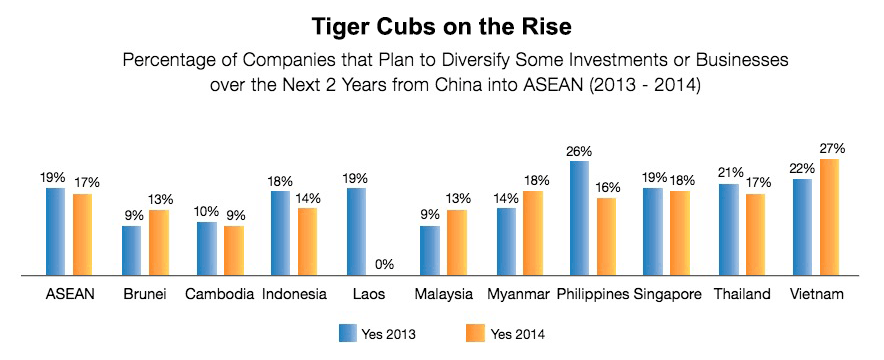Supply Chain Talent: Key to Feeding Tiger Cub Economies
By Jeffrey Stryker, Partner in Charge, Heidrick & Struggles
WHILE MOST SENIOR REGIONAL SUPPLY CHAIN EXECUTIVES TEND TO CONGREGATE IN TIER 1 LOCATIONS like Hong Kong, Singapore or Shanghai, the shift of manufacturing hubs from East Asia to the emerging markets of Southeast Asia has created an unprecedented demand for supply chain professionals in the region. As a result, the increasingly important emerging economies like Thailand, Vietnam, Indonesia, Malaysia and the Philippines—aka the “tiger cub” economies—have huge supply chain needs that cannot be met by the region’s relatively shallow talent pool.
One exception is the rapidly emerging Philippines, where sustained optimism in manufacturing and retail consumption continues to drive changes in the supply chain landscape. In response, universities and certification bodies are offering supply chain-dedicated diplomas and training courses that have helped expand the population of talented supply chain professionals in the region.
Still, there is a big gap to fill. Filipinos are mobile, but they are often resistant to working in markets such as in Thailand where there are a variety of cultural clashes. We have, however, witnessed successful cases of placing Filipino ex-pats in Vietnam and Indonesia. This level of talent versatility will be an advantage for the Philippines in the long run.
On the whole, companies in Southeast Asia are going to have to look beyond their borders for the requisite supply chain talent. They may have to post ASEAN Economic Community (AEC) ex-pats into these emerging markets and groom local talent.

Source: 2015 ASEAN Business Outlook Survey
More formal education and certification programs are likely to arise in response to growing government support for various infrastructure, logistics and supply chain programs in the region. For example, in Thailand—the second largest emerging market in ASEAN and a prime target for investment—the Thai government has implemented an ambitious plan to turn the nation into a key logistics hub in the AEC by 2022. In addition to developing and integrating all transportation platforms—rail, air, road and water—the plan includes training of 7,500 supply chain and logistics professionals. Similar infrastructure improvement projects are also underway in Indonesia and Vietnam.
While efforts like these will yield long-term benefits, in the short term, organizations still need to work to develop a globally competitive supply chain talent pipeline. To that end, we recommend:
- Utilizing seasoned expatriates to transfer their global skill sets and groom local talent. The success of the Philippines can be traced to implementing this strategy, which both satisfies the economy’s immediate need for experienced talent and induces skills transfer to local talent. Eventually, knowledge transfer reaches a critical threshold and the local supply chain can become self-sustaining.
- Encouraging local talent to embrace potential overseas postings. This has proved challenging with Thai executives and foreign MNCs based in Thailand, as they appear to have the least interest in leaving their hometown to advance their careers elsewhere. Promoting regional mobility in young managers is one strategy to ensure companies leverage opportunities across the AEC.
With the opportunity for tremendous growth in the AEC on the horizon, the need to address this issue is urgent. Those organizations and regions that are most aggressive in recruiting and developing supply chain talent will be instrumental in enabling their respective countries to prevent a bottleneck to economic growth.
Related Resources:
- Survey: The 2015 Hays Asia Salary Guide: Asia’s Talent Gap Salary and Recruiting Insights to Bridge the Divide
- Article: Infrastructure plans to turn Thailand into AEC logistics hub
- Study: Supply Chain Success Factors in Emerging Markets
-
White Paper: ASEAN 2030, Toward a Borderless Economic Community
